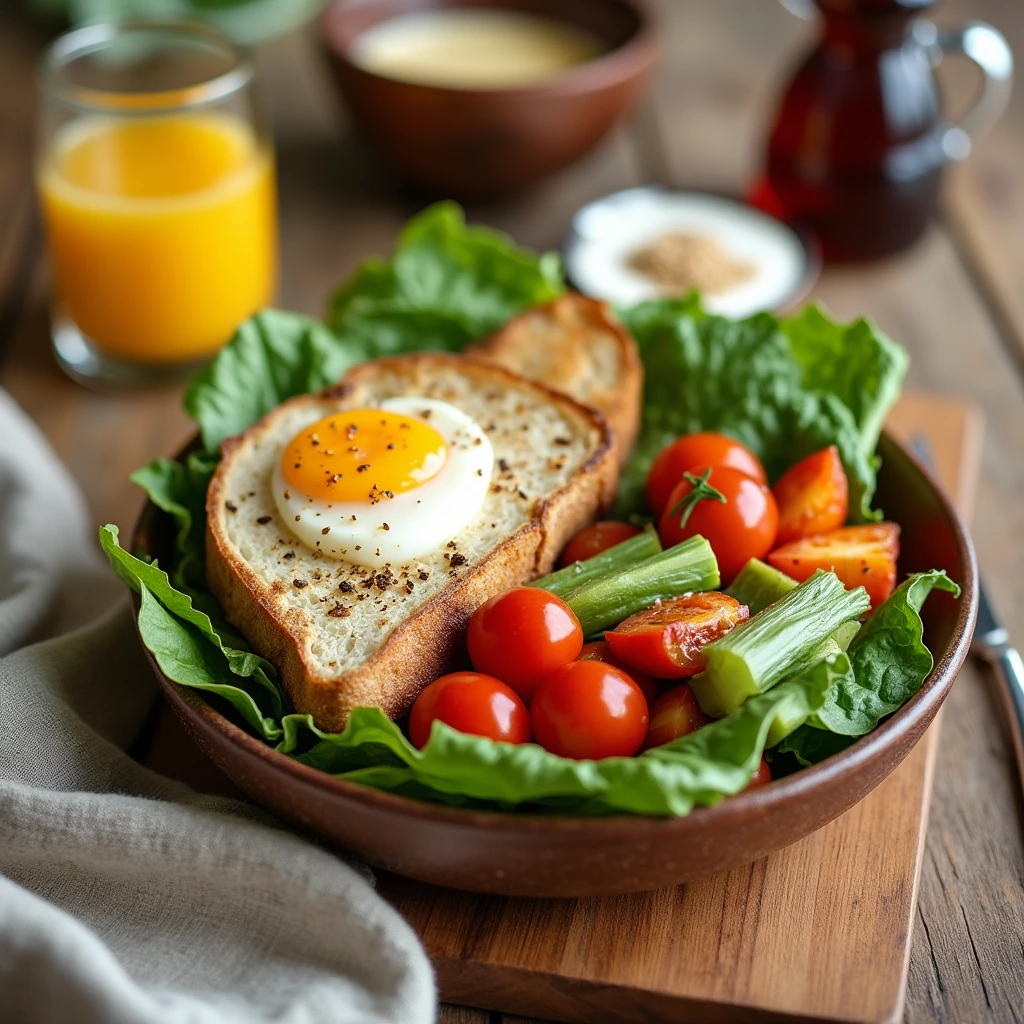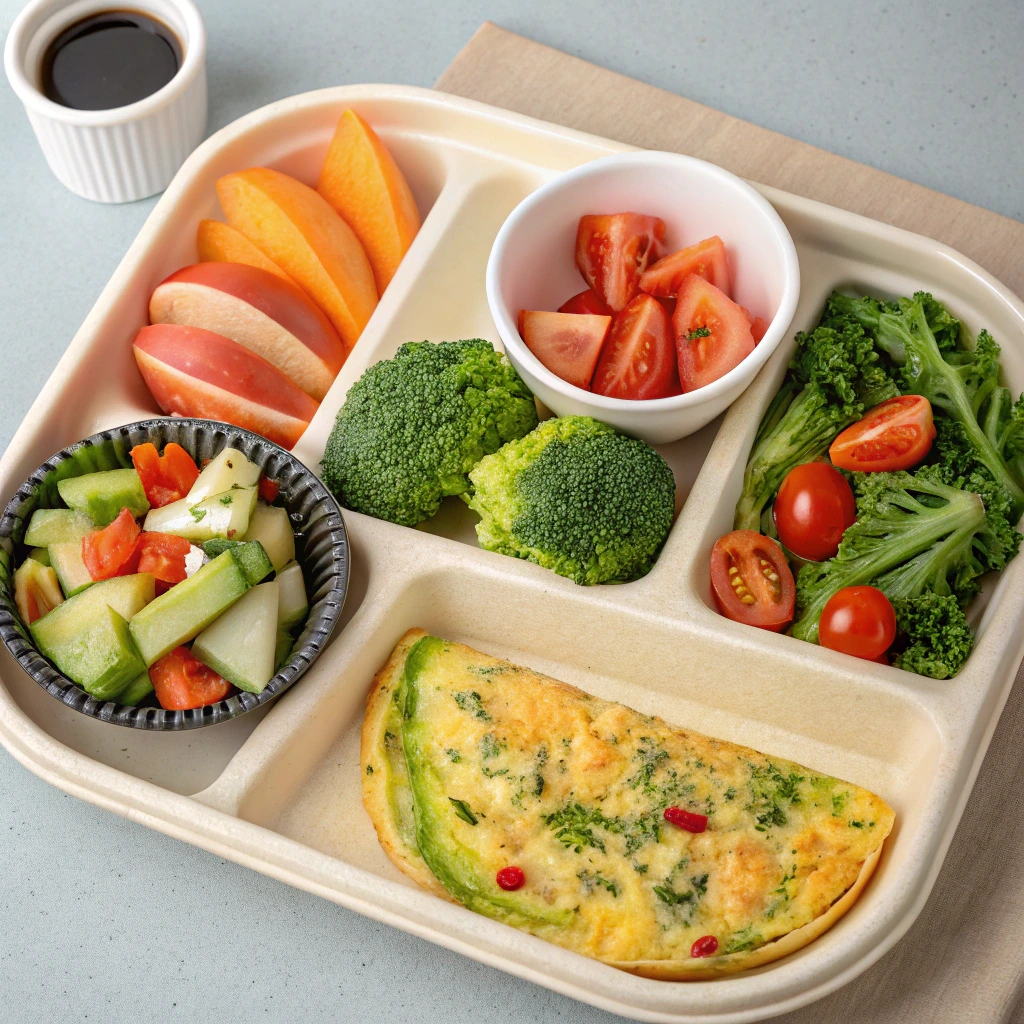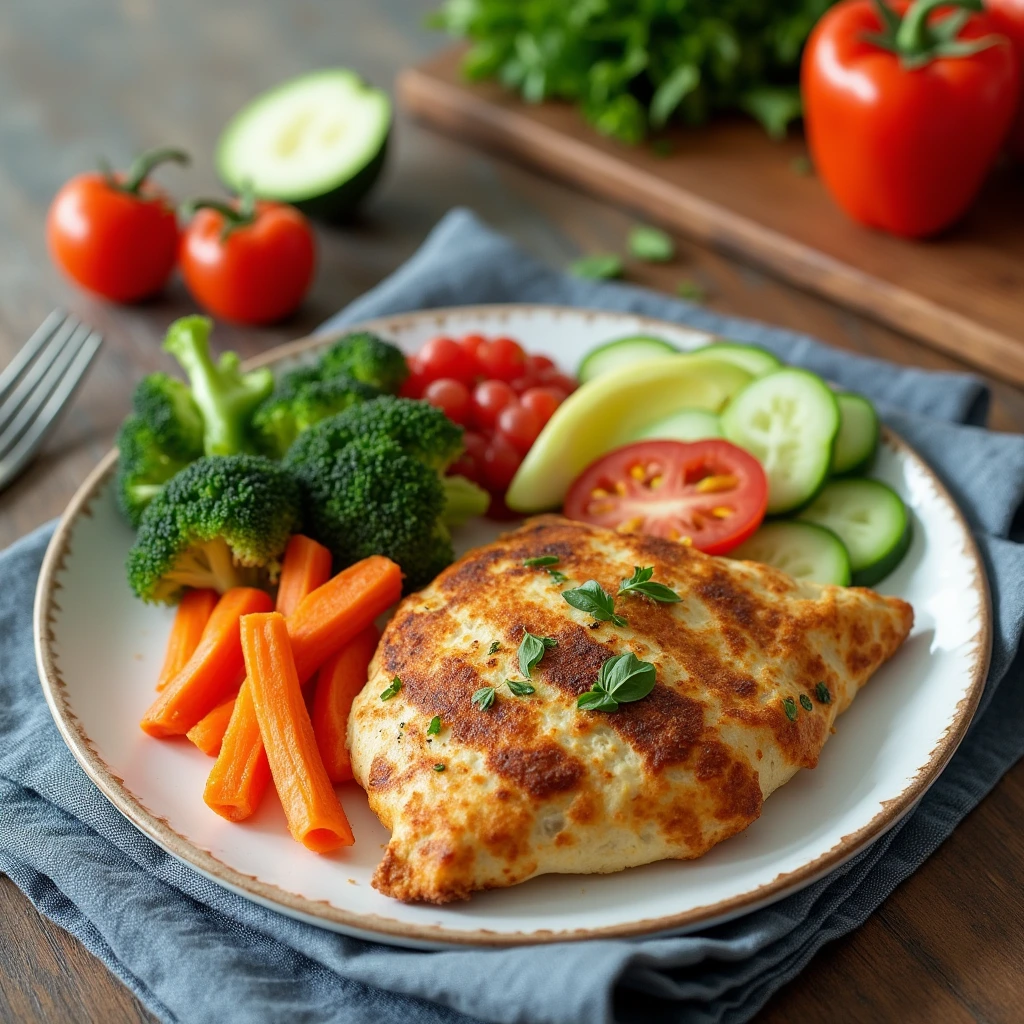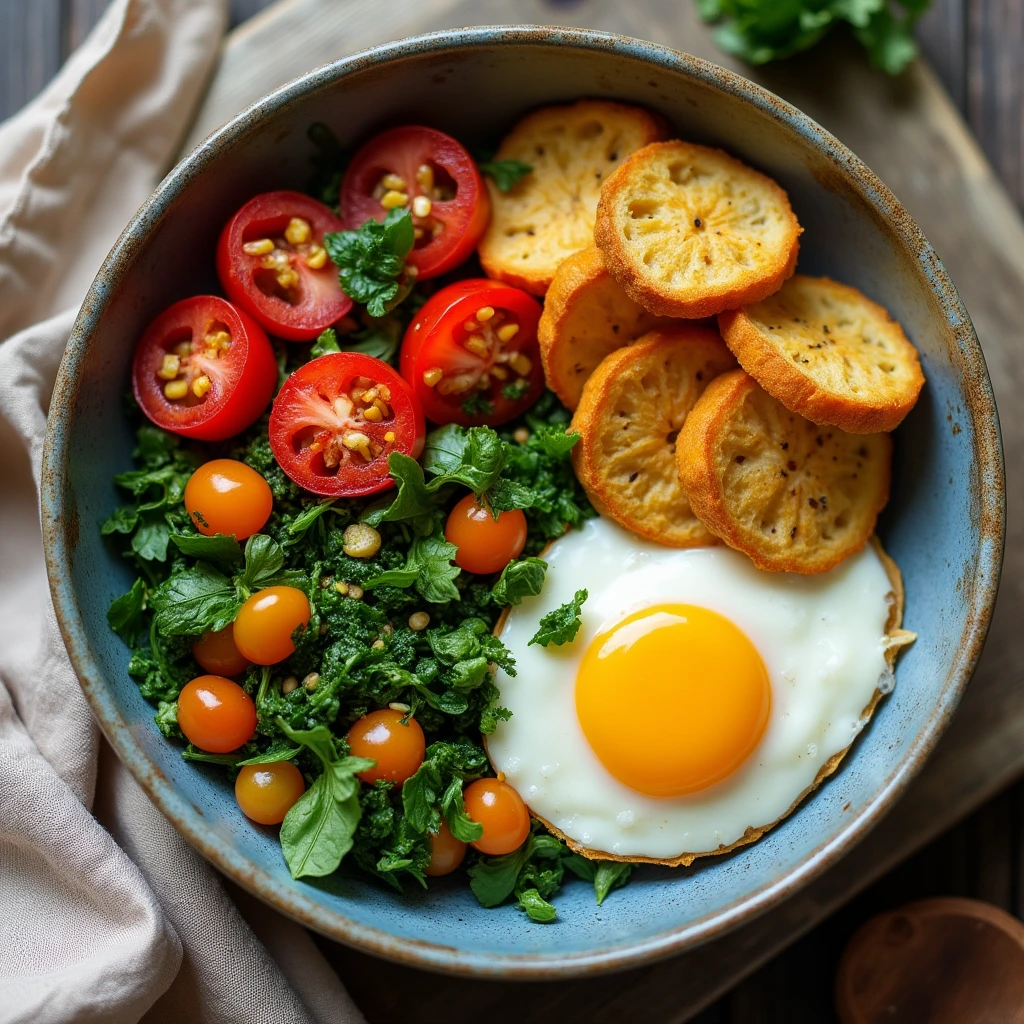
Introduction: Why Vegetable-Packed Meals Matter to You
Imagine this: you’re standing in your kitchen, staring at a fridge full of fresh, colorful vegetables. You know they’re good for you, but you’re not sure how to turn them into meals that are both delicious and satisfying. Sound familiar? You’re not alone. Many of us struggle to incorporate enough veggies into our diets, even though we know they’re essential for our health.
Vegetable-packed meals aren’t just about eating your greens—they’re about creating a lifestyle that fuels your body, boosts your energy, and keeps you feeling your best. Whether you’re looking to lose weight, improve your digestion, or simply eat more mindfully, this guide will show you how to make vegetables the star of your plate. Let’s dive into the world of nutrient-rich, flavorful meals that will transform the way you eat.
1. Why Vegetable-Packed Meals Are Essential for a Balanced Diet
The Nutritional Benefits of Vegetables
Vegetables are nature’s multivitamins. They’re packed with essential nutrients like:
- Vitamins A, C, and K: Support vision, immunity, and bone health.
- Minerals like iron and potassium: Promote energy levels and heart health.
- Antioxidants: Fight inflammation and protect against chronic diseases.
- Fiber: Aids digestion, keeps you full longer, and supports weight management.
Including a variety of vegetables in your meals ensures you’re getting a wide range of nutrients to keep your body functioning at its best.
How Vegetables Support Overall Health
- Boost Immunity: Vitamin C-rich veggies like bell peppers and broccoli strengthen your immune system.
- Reduce Inflammation: Leafy greens and colorful veggies contain antioxidants that combat inflammation.
- Promote Heart Health: Potassium-rich vegetables like spinach and sweet potatoes help regulate blood pressure.
- Aid Weight Management: Low in calories but high in volume, vegetables help you feel full without overeating.
The Role of Vegetables in Popular Diets
- Mediterranean Diet: Emphasizes vegetables, whole grains, and healthy fats.
- Plant-Based and Vegan Diets: Rely heavily on vegetables for essential nutrients.
- Keto Diet: Includes low-carb veggies like zucchini, cauliflower, and leafy greens.
No matter your dietary preferences, vegetables can play a key role in helping you achieve your health goals.
2. Top Vegetables to Include in Your Meals
Leafy Greens (Spinach, Kale, Swiss Chard)
- Why They’re Great: Rich in iron, calcium, and vitamins A and K.
- How to Use Them: Add to salads, smoothies, or sauté as a side dish.
Cruciferous Vegetables (Broccoli, Cauliflower, Brussels Sprouts)
- Why They’re Great: High in fiber and cancer-fighting compounds like sulforaphane.
- How to Use Them: Roast, steam, or add to stir-fries.
Colorful Veggies (Bell Peppers, Carrots, Sweet Potatoes)
- Why They’re Great: Loaded with antioxidants and beta-carotene.
- How to Use Them: Grill, bake, or toss into soups and grain bowls.
Versatile Veggies (Zucchini, Eggplant, Mushrooms)
- Why They’re Great: Low in calories and adaptable to various dishes.
- How to Use Them: Spiralize into noodles, roast, or layer into casseroles.
3. Easy Vegetable-Packed Meal Ideas
Quick Stir-Fries with Seasonal Vegetables
- Ingredients: Bell peppers, broccoli, snap peas, tofu or chicken, soy sauce.
- Tip: Use a mix of fresh and frozen veggies for convenience.
Hearty Vegetable Soups and Stews
- Recipe Idea: Creamy Cauliflower Soup (see table below for ingredients).
- Tip: Double the recipe and freeze for quick meals.
Nutrient-Dense Grain Bowls
- Ingredients: Quinoa, roasted sweet potatoes, kale, avocado, tahini dressing.
- Tip: Prep ingredients in advance for easy assembly.
Veggie-Loaded Smoothies and Salads
- Smoothie Idea: Spinach, banana, almond milk, and chia seeds.
- Salad Idea: Mixed greens, roasted veggies, and a tangy vinaigrette.
4. Tips for Incorporating More Vegetables into Your Diet
Sneak Veggies into Your Favorite Dishes
- Add grated zucchini to muffins or spinach to pasta sauces.
Experiment with Different Cooking Methods
- Try roasting, steaming, grilling, or air-frying for variety.
Plan Ahead with Meal Prep
- Chop and store veggies for easy access during the week.
Make Vegetables the Star of Your Plate
- Build meals around veggies instead of treating them as a side dish.
5. Delicious Vegetable-Packed Recipes to Try
Roasted Vegetable Medley with Herbs
| Ingredients | Instructions |
|---|---|
| 2 cups broccoli florets | Preheat oven to 400°F (200°C). |
| 1 cup sliced carrots | Toss veggies with olive oil, salt, and herbs. |
| 1 cup bell peppers | Roast for 20-25 minutes, stirring halfway. |
Spinach and Sweet Potato Buddha Bowl
| Ingredients | Instructions |
|---|---|
| 1 cup quinoa | Cook quinoa according to package instructions. |
| 1 roasted sweet potato | Layer quinoa, roasted sweet potato, and spinach. |
| 2 cups fresh spinach | Drizzle with tahini dressing. |
Creamy Broccoli and Cauliflower Soup
| Ingredients | Instructions |
|---|---|
| 2 cups broccoli florets | Sauté onions and garlic in olive oil. |
| 2 cups cauliflower florets | Add broccoli, cauliflower, and vegetable broth. |
| 4 cups vegetable broth | Simmer until tender, then blend until creamy. |
Zucchini Noodles with Pesto and Cherry Tomatoes
| Ingredients | Instructions |
|---|---|
| 2 zucchinis, spiralized | Spiralize zucchini into noodles. |
| 1 cup cherry tomatoes | Toss with pesto and halved cherry tomatoes. |
| ¼ cup pesto | Serve immediately or chill for a cold dish. |

6. The Science Behind Vegetable-Packed Diets
How Vegetables Improve Gut Health
Your gut is home to trillions of bacteria that play a crucial role in digestion, immunity, and even mental health. Vegetables, especially those high in fiber, act as prebiotics—food for the good bacteria in your gut.
- Examples: Asparagus, garlic, onions, and leeks are excellent for gut health.
- Tip: Include a variety of fiber-rich vegetables to support a diverse gut microbiome.
The Role of Vegetables in Disease Prevention
Studies show that diets rich in vegetables can reduce the risk of chronic diseases like heart disease, diabetes, and certain cancers.
- Key Nutrients: Antioxidants, fiber, and phytochemicals in vegetables combat oxidative stress and inflammation.
- Research Highlight: A 2021 study published in the Journal of Nutrition found that individuals who consumed at least 5 servings of vegetables daily had a 20% lower risk of heart disease.
Vegetables and Mental Health
What you eat affects your brain as much as your body. Vegetables like spinach, kale, and broccoli are rich in folate and magnesium, which support brain function and mood regulation.
- Tip: Incorporate leafy greens into your meals to boost mental clarity and reduce stress.
7. Seasonal Eating: Maximizing Flavor and Nutrition
Why Seasonal Vegetables Are Better
- Fresher and More Nutritious: Seasonal vegetables are harvested at their peak, retaining more nutrients.
- Cost-Effective: They’re often cheaper and more abundant.
- Environmentally Friendly: Eating seasonally reduces the carbon footprint associated with transporting out-of-season produce.
Seasonal Vegetable Guide
| Season | Vegetables to Enjoy |
|---|---|
| Spring | Asparagus, peas, radishes, spinach. |
| Summer | Tomatoes, zucchini, bell peppers, cucumbers. |
| Fall | Pumpkins, sweet potatoes, Brussels sprouts, kale. |
| Winter | Carrots, parsnips, winter squash, cabbage. |
Recipes for Every Season
- Spring: Asparagus and Pea Risotto.
- Summer: Grilled Vegetable Skewers with Herb Marinade.
- Fall: Roasted Butternut Squash Soup.
- Winter: Hearty Cabbage and Carrot Stew.
8. How to Store Vegetables for Maximum Freshness
Proper Storage Techniques
- Leafy Greens: Store in a breathable bag in the fridge with a damp paper towel to retain moisture.
- Root Vegetables: Keep in a cool, dark place like a pantry or cellar.
- Cruciferous Veggies: Store in the fridge’s crisper drawer.
Freezing Vegetables
- Blanching: Briefly boil vegetables like broccoli or green beans before freezing to preserve texture and color.
- Tip: Use frozen veggies in soups, stews, or smoothies for convenience.
Avoiding Food Waste
- Revive Wilted Veggies: Soak in ice water for 10-15 minutes to crisp them up.
- Use Scraps: Save vegetable peels and ends to make homemade broth.

9. Vegetable-Packed Meals for Specific Dietary Needs
Gluten-Free Options
- Recipe Idea: Zucchini Noodles with Pesto (see recipe above).
- Tip: Use gluten-free grains like quinoa or rice in grain bowls.
Low-Carb and Keto-Friendly Meals
- Recipe Idea: Cauliflower Fried Rice.
- Tip: Focus on non-starchy vegetables like zucchini, spinach, and mushrooms.
High-Protein Vegetable Meals
- Recipe Idea: Lentil and Vegetable Curry.
- Tip: Pair veggies with protein sources like beans, tofu, or lean meats.
10. The Role of Vegetables in Weight Loss
Vegetables are a powerhouse when it comes to weight loss. Their low-calorie, high-fiber content makes them an essential part of any balanced diet. According to a study by the Harvard T.H. Chan School of Public Health, incorporating more vegetables into your meals can help you feel fuller for longer, reducing the likelihood of overeating.
Why Vegetables Are a Weight Loss Superfood
- Low in Calories, High in Volume: You can eat larger portions without consuming too many calories.
- High in Fiber: Keeps you full longer, reducing the urge to snack.
- Hydration: Many vegetables, like cucumbers and celery, have high water content, aiding hydration and satiety.
Best Vegetables for Weight Loss
- Leafy Greens: Spinach, kale, and arugula.
- Cruciferous Vegetables: Broccoli, cauliflower, and Brussels sprouts.
- Non-Starchy Veggies: Zucchini, bell peppers, and mushrooms.
Sample Weight Loss Meal Plan
| Meal | Vegetable-Packed Option |
|---|---|
| Breakfast | Spinach and Mushroom Omelette. |
| Lunch | Quinoa Salad with Roasted Veggies. |
| Dinner | Grilled Chicken with Steamed Broccoli and Cauliflower Mash. |
| Snacks | Carrot Sticks with Hummus or Kale Chips. |
11. How to Make Vegetables Kid-Friendly
Creative Presentation
- Fun Shapes: Use cookie cutters to create star-shaped cucumbers or carrot flowers.
- Colorful Plates: Arrange veggies in a rainbow pattern to make them visually appealing.
Sneaky Recipes
- Veggie-Packed Mac and Cheese: Add pureed butternut squash or cauliflower to the cheese sauce.
- Green Smoothies: Blend spinach or kale with sweet fruits like bananas and berries.
Involving Kids in Cooking
- Let Them Choose: Take your kids grocery shopping and let them pick out a new vegetable to try.
- Cook Together: Assign simple tasks like washing veggies or stirring sauces.
12. The Environmental Impact of Vegetable-Packed Diets
Reducing Your Carbon Footprint
- Plant-Based Diets: Require fewer resources like water and land compared to meat-based diets.
- Local and Seasonal Eating: Supports local farmers and reduces transportation emissions.
Sustainable Farming Practices
- Organic Farming: Avoids synthetic pesticides and fertilizers, promoting soil health.
- Regenerative Agriculture: Focuses on restoring ecosystems and improving biodiversity.
How You Can Make a Difference
- Grow Your Own: Start a small vegetable garden at home.
- Compost: Turn food scraps into nutrient-rich compost for your plants.

Conclusion: Your Journey to a Vegetable-Packed Lifestyle
Vegetable-packed meals are more than just a trend—they’re a sustainable, health-focused way of eating that benefits both you and the planet. By incorporating more vegetables into your diet, you’re not only nourishing your body but also taking a step toward a healthier, more balanced lifestyle.
Start small: try one new recipe this week, experiment with a vegetable you’ve never cooked before, or simply add an extra serving of veggies to your plate. Over time, these small changes will add up to big results.
Call-to-Action: What’s your favorite way to enjoy vegetables? Share your tips, recipes, or success stories in the comments below—we’d love to hear from you!
FAQ Section
Q1: Can I get enough protein from vegetable-packed meals?
A: Absolutely! Pair vegetables with protein-rich foods like beans, lentils, tofu, or quinoa to meet your daily protein needs.
Q2: Are canned vegetables as nutritious as fresh ones?
A: Canned vegetables can be just as nutritious, but opt for low-sodium varieties and rinse them before use to reduce salt content.
Q3: How do I make vegetables taste better without adding too much salt or fat?
A: Use herbs, spices, citrus juice, or vinegar to enhance flavor without extra calories.
Q4: What’s the best way to meal prep vegetable-packed meals?
A: Chop and store veggies in airtight containers, cook grains and proteins in advance, and assemble meals throughout the week.
